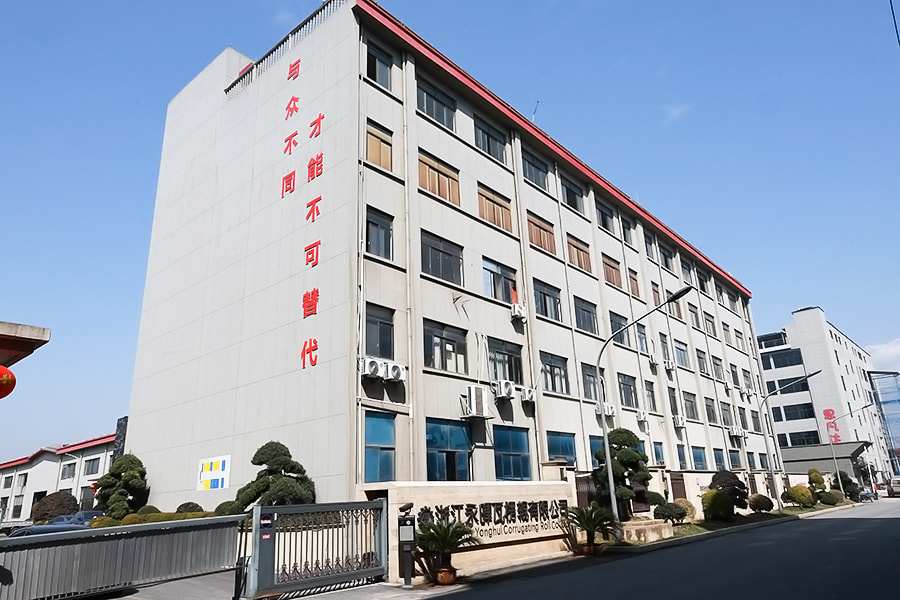Contact us
Focused on the R&D and manufacturing of high-quality corrugated rollers, the "heart" component of the corrugated cardboard production line.
+86-18661680180
A conveyor belt is an essential component in various industrial and manufacturing processes, designed to transport materials efficiently from one point to another. It consists of a continuous loop of material that moves over a series of rollers or a flat surface, powered by a motor. Conveyor belts are widely used in industries such as food processing, packaging, and logistics, where they streamline operations by reducing manual labor and increasing productivity. They come in different types, including flat belts, modular belts, and roller belts, each suited for specific applications. For instance, flat belts are ideal for transporting lightweight items, while roller belts are better for heavy-duty tasks. The durability and efficiency of conveyor belts make them indispensable in modern manufacturing, ensuring smooth and consistent material handling.
Enterprise establishment

Employees


As a manufacturer of conveyor systems, we understand the critical role that conveyor belts play in optimizing the efficiency of production lines across various industries. Whether you're looking to streamline assembly processes or enhance material handling capabilities, selecting the right conveyor belt system is essential. This guide will answer some key questions about conveyor systems, including assembly belts, continuous conveyor belts, and conveyor belt production lines. We will also offer practical advice from a manufacturer's perspective to help potential buyers make informed decisions.
A conveyor belt is an essential part of material handling systems that allows for the continuous transport of items along a production line. The belt typically consists of a long, flexible material (such as rubber, PVC, or fabric) that moves over pulleys. It is used in various industries, including manufacturing, logistics, mining, and food processing.
The conveyor belt works by moving materials from one location to another using rotating pulleys that drive the belt's motion. The system is designed to carry items efficiently while minimizing manual labor and reducing the risk of injury.
Advice for Buyers: When purchasing a conveyor belt system, consider the material that the belt is made from. Different materials, such as rubber, PVC, or metal, offer different advantages in terms of durability, flexibility, and resistance to wear. It's crucial to select a belt material that matches your operational needs to ensure smooth and efficient performance.
An assembly belt, or assembly line conveyor, is a type of conveyor system designed to transport products or components along a production line where assembly operations are carried out. The system is used to ensure a continuous flow of products or parts through the assembly process, often integrating with other equipment such as robotic arms, hoppers, and automatic feeders.
The key feature of an assembly belt is its ability to allow workers or automated machines to easily assemble products as they move down the line. It ensures uniform spacing and positioning of components, making it ideal for manufacturing products in large volumes.
Advice for Buyers: When considering an assembly belt, evaluate the speed and capacity of the conveyor system to ensure it can handle the volume of materials your production line requires. If your operation involves heavy or large components, choose an assembly belt that offers reinforced structures and heavy-duty components.
A continuous conveyor belt is designed to move materials in a seamless, uninterrupted flow. Unlike traditional conveyor systems that might involve multiple start-and-stop points, a continuous conveyor belt runs without interruption, which is ideal for processes that require a constant and steady movement of materials.
In many industries, such as food processing, packaging, and manufacturing, continuous conveyor belts are essential for maintaining high production speeds while reducing downtime. They are especially useful in systems that need to maintain a consistent pace without disruptions.
Advice for Buyers: For businesses that require continuous movement for their production lines, selecting the right continuous conveyor belt is crucial. Consider the type of material being transported, the weight of the load, and the belt's ability to handle high speeds and heavy-duty tasks. A continuous system is often designed for specific tasks, so work closely with the manufacturer to ensure the system matches your operational requirements.
A conveyor belt production line is a fully integrated system that includes all components necessary to manufacture conveyor belts. It typically consists of multiple machines and processes, such as cutting, joining, splicing, and testing, that work together to produce custom or standard conveyor belts suited for different industrial applications.
The key benefit of having a dedicated conveyor belt production line is that it allows manufacturers to produce belts with precise specifications, ensuring that they meet the exact needs of different industries. Additionally, it can facilitate higher production rates, quality control, and cost efficiency.
Advice for Buyers: When considering an assembly belt, evaluate the speed and capacity of the conveyor system to ensure it can handle the volume of materials your production line requires. If your operation involves heavy or large components, choose an assembly belt that offers reinforced structures and heavy-duty components.